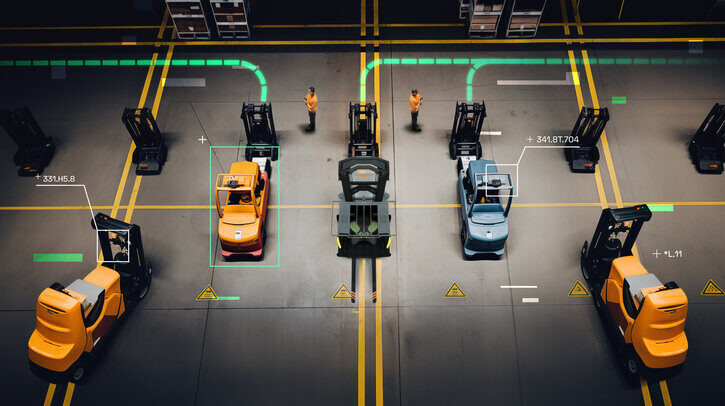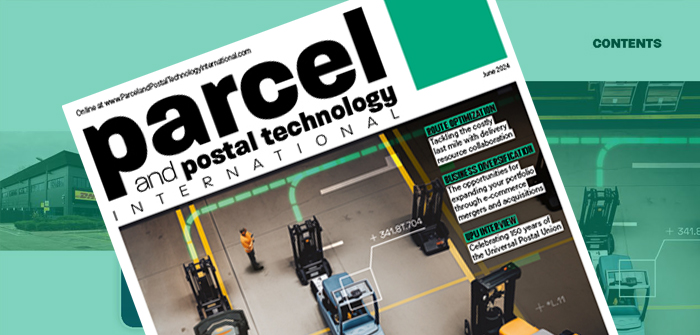According to a report by DHL, the global computer vision market is expected to quadruple in size between 2020 and 2030, rising from US$9.4bn to US$41.4bn over the 10-year period. This growth is being accelerated by the continued improvement of AI, vision systems and computer processing technologies, which are enabling more advanced computer vision applications for many industries, including logistics.
“Today, AI-driven computer vision uses artificial intelligence algorithms, particularly deep learning, to automatically learn from large data sets, allowing computers to recognize patterns and objects with higher accuracy and less human input, replicating the brain’s ability to understand and make sense of visual information,” says Asim Darwaish, head of AI and data science at PackageX, a B2B tech startup founded to modernize logistics operations for businesses through its first-party apps and APIs.
DHL and PackageX both believe that AI-driven computer vision is set to have a big impact on the logistics sector in the coming years, enabling more efficient processes as well as sustainable and safe operations.
“Computer vision will play a vital role in the ongoing automation and digitalization of logistics, fundamentally reshaping the future of our interconnected industry,” comments Dr Klaus Dohrmann, VP and head of innovation and trend research at DHL Customer Solutions and Innovation.
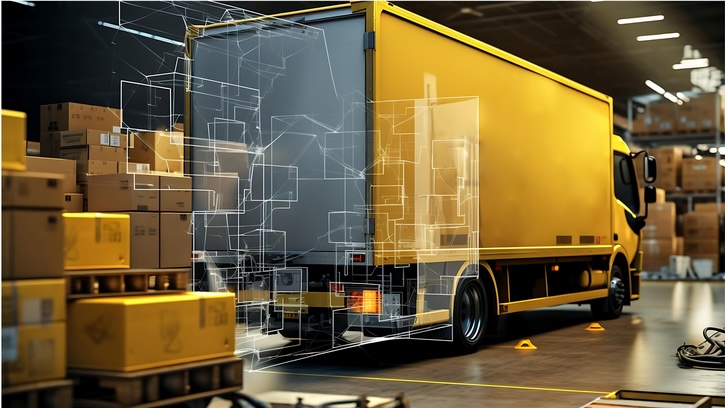
AI-driven computer vision in action
According to Dohrmann, the adoption of computer vision technology is rapidly expanding across the logistics sector. DHL’s latest Logistics Trend Radar predicts that it will make its greatest impact on the industry in the next five years.
At the moment, DHL leverages computer vision technology to enhance the speed and accuracy of label identification during parcel sorting, alongside dimensioning tasks for parcels, pallets and similar items. “Furthermore, we are actively exploring visual AI applications to enhance workplace safety and streamline processes,” Dohrmann explains.
For the latter, DHL Global Forwarding has recently worked with Protex AI on a proof-of-concept pilot project in Copenhagen, Denmark, to showcase the potential of computer vision to improve workplace safety.
Protex AI’s system uses computer vision and AI to analyze data and generate proactive safety events, which can include things like non-compliance with procedures. The technology actively observes and assesses various parameters such as forklift speed, adherence to predefined walkways, proper use of personal protective equipment (PPE), optimized head counts and identification of obstructed pathways.
“This project has yielded positive outcomes, providing health and safety management teams with visibility to identify near-misses and adjust workflows preemptively to prevent accidents,” says Dohrmann.
Elsewhere, PackageX employs computer vision technology during the inbound receiving process, using cameras and AI to automatically scan and process packages, inventory and pallets. The technology identifies label and document details such as barcodes, return merchandise authorization (RMA) numbers, addresses, order numbers and dimensions, ensuring accurate and efficient logging, sorting and routing without manual intervention. “This streamlines the receiving process, reduces errors and enhances overall operational efficiency,” says Kyle Grzybowski, product manager at PackageX.
Future use cases
According to Grzybowski, there are several other applications within the logistics industry that could benefit from the rollout of computer vision. Auditing is one of them. “This could use a combination of computer vision and augmented reality to offer the ability for users to quickly audit what is on hand,” he explains. “The process could allow us to identify the labels for each item and quickly relay a visual cue to the user of whether the item meets or fails the defined logic.”
Grzybowski notes that other use cases include damage detection, where computer vision identifies packages damaged during transit and storage, and visual search, where the technology can be used to search and return inventory items from the database by simply taking photos of the specific products.
DHL’s Dohrmann believes that a wider array of applications will emerge as advances in technology improve computer vision’s capabilities in depth perception, 3D reconstruction and image interpretation.
“For example, computer vision can be used to generate heat maps, offering valuable insights into workflow patterns, identifying bottlenecks and pinpointing activity hot spots in warehouses and yards,” he explains. “This non-invasive method analyzes movement frequency and duration, aiding in efficient inventory placement and operational enhancements.
“Computer vision can also offer predictive maintenance capabilities for logistics assets, alerting maintenance teams to intervene before issues arise and predicting when critical assets will require maintenance,” he continues.
Dutch automation firm Prime Vision has been providing computer vision solutions to postal, logistics and e-commerce businesses for several years now. The company’s optical character recognition (OCR) solution, advanced barcode readers and other identifiers help with address recognition, parcel singulation, dimensioning and shipping fee verification, among other things. Furthermore, its autonomous sorting robots use computer vision to accurately locate mail items, determine their dimensions and identify critical data.
“Additionally, computer vision is integral to our Smart Scene Understanding solution,” explains Lorenzo D’Arsiè, product manager at Prime Vision. “When combined with trackers and spatial elements, this solution not only locates objects but also analyzes the data to adjust tactics and predict the next logical steps. For example, if roll cages or crates are misplaced, causing shortages elsewhere, assets equipped with trackers can be anticipated and rerouted in a timely manner, ensuring uninterrupted business operations.”
D’Arsiè also believes that AI-driven computer vision could be used to sort and package items more efficiently by recognizing products and their attributes, such as the dimensions needed for accurate packaging.
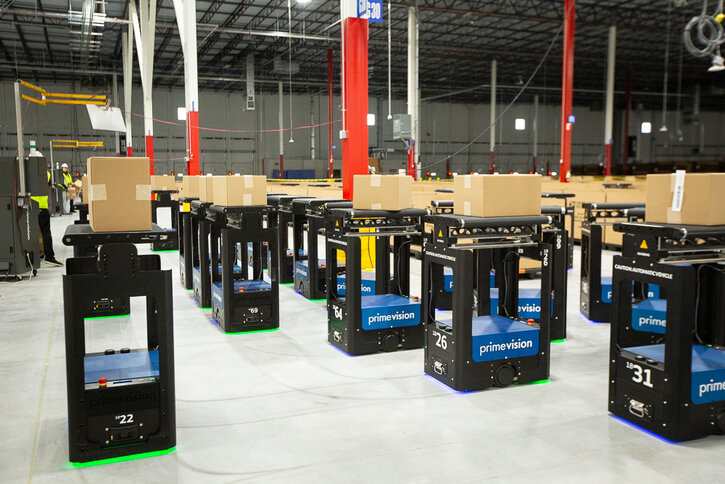
Evri’s new AI strategy
One logistics firm that has successfully tested AI-driven computer vision is UK parcel delivery company Evri. In June, the firm announced that it is investing £1m (US$1.3m) in a new AI strategy to transform its business and ensure parcels pass through its network securely.
The strategy focuses on three key areas: using AI to improve customer service by automating simple data collection and identification of issues; implementing AI-powered tools to enhance parcel security; and using AI to optimize workforce planning by analyzing data and predicting future demands. Evri also aims to employ augmented-reality headsets in the future to significantly reduce the time it takes to bring in and train new couriers.
“The aim is to revolutionize the logistics industry and use AI to offer the ultimate personalized customer service, as well as reduce delivery cost and risk to the organization,” asserts Marcus Hunter, chief technology officer at Evri. “Although we have been investing in AI for a while now, we haven’t been doing this in a structured way. This new £1m strategy includes a clear process to discover, design, define and go live with new AI-powered solutions.”
To develop the new process, Evri has collaborated with AI consultancy Robiquity to create an AI Centre of Excellence team, which will work closely with the firm’s existing Innovation Team. For the excellence team, Evri has recruited top talent, including architects, developers and business-change personnel, to ensure it has the right people at the heart of its transformational work.
According to Hunter, the AI Centre of Excellence team will look at building on existing AI applications and exploring new use cases. Ideas for new AI-based applications can come from anywhere – staff, external companies or management. “The only proviso is that the technology to be used has to be enterprise ready,” he adds.
Evri already uses enterprise solutions such as Amazon Q – the AWS generative AI-powered assistant – and Co-Pilot from Microsoft, which are both employed in the company’s interactive voice response (IVR) system to automate some customer service processes, leaving staff free to deal with more complex tasks.
In terms of computer vision, Evri will use its new AI strategy to guide the further development of its Parcel Vision technology, which was introduced in 2022. Parcel Vision checks every photo that couriers take, in real time, to ensure the quality of delivery photos.
Evri will now use AI-powered computer vision to more quickly identify, on the doorstep, if a parcel is being left in a very safe place, as the tech will analyze data against previous delivery photos. The enhancements will also analyze claims data and automatically check geolocation and delivery photos to identify potentially false claims.
“By implementing Parcel Vision, Evri has reduced its parcel claims figures from 33% in 2022 to 6% last year,” Hunter explains. “This technology can also be used to work out what the packaging type is, such as card, paper, plastic, etc, and whether that packaging is appropriate for what the customer ordered and the delivery specified. We can then use this data to inform the retailer that their packaging needs to be changed, which will also help reduce claims in the future.”
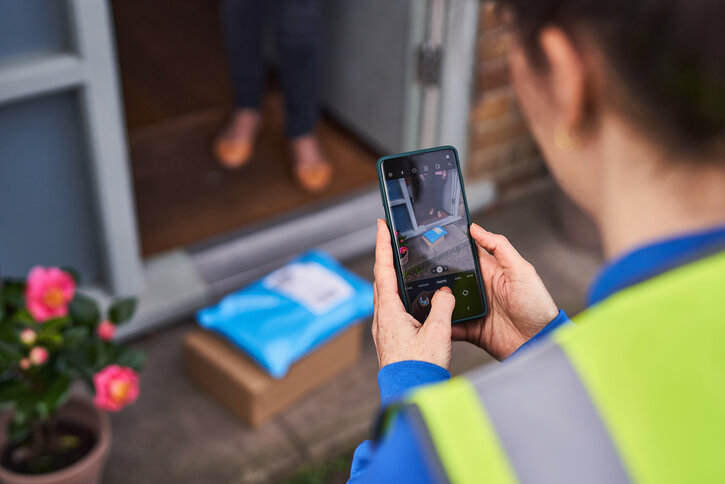
Evri is also using computer vision within its sorting hubs, where scanners analyze the data on parcel labels, as well as the parcel itself, to ensure it is compliant. This can help with revenue protection. “We are also looking at how we can use computer vision to identify how full trailers are and how to make the best use of the trailer space to be more efficient when it comes to delivery,” Hunter continues.
“Another area we are considering for AI and robotics is cleaning in depots and hubs. We currently spend time and money on cleaning contractors. If we were to use cleaning robots then we could link them to when the doors shut in the bays, so they could begin work while operations continue. They can also get under equipment, which humans can’t, so this improves health and safety and reduces external spend.”
The future of AI-driven computer vision
As AI and camera technology advances, the applications for computer vision within logistics will continue to expand, according to PackageX’s Grzybowski. “While these new applications may still be unknown, we are confident that through this expansion we will see a shift in the types of devices used to manage supply chain processes,” he says. “The workforce, for example, will shift from barcode scanners and handheld devices to camera-based headwear, like the Vision Pro and HoloLens. Adopting these devices will become mainstream, allowing workers to implement computer vision capabilities across their day-to-day tasks.”
Prime Vision’s D’Arsiè believes that AI-driven computer vision will also help logistics firms be more flexible to better handle fluctuating volumes throughout the year. “The future of AI-driven computer vision in the logistics industry looks promising, especially as the base technology and scale of available data continue to grow,” he adds.
“AI will likely drive widespread automation, including the use of autonomous robots and drones for warehousing and last-mile delivery. Scalability will become easier, allowing operations to meet growing demand without proportional increases in labor. Finally, there will be a move toward more personalized logistics solutions, enhancing customer satisfaction and experience.”
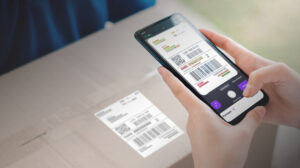 Data privacy concerns
Data privacy concerns
When evaluating the implementation of an AI-powered computer vision solution, one of the primary considerations is data security and privacy, according to DHL. Ensuring the integrity of the data sets used for machine learning and training is crucial for the reliability and accuracy of the AI output. Additionally, with computer vision solutions often capturing personally identifiable information, safeguarding this data is paramount.
“Compliance with regulations such as GDPR is essential to ensure the solution’s robustness and scalability,” explains Dr Klaus Dohrmann at DHL Customer Solutions and Innovation. “Moreover, implementing anonymization techniques such as blurring or silhouetting adds an extra layer of privacy protection for individuals captured by the solution.”
PackageX’s Asim Darwaish recommends that any company looking to implement computer vision should adhere to several strict security, ethical and compliance features, including data encryption and privacy, continuous auditing and monitoring to identify any suspicious activities in real time, authorized access controls, vulnerability management – including regularly updating software and infrastructure to protect against the latest threats – and transparency in how the AI models are used.
“We also have a robust incident response plan in place to promptly detect, report and respond to security incidents,” he comments. “This may involve isolating affected systems, revoking compromised credentials or blocking malicious IP addresses. We then work to eradicate the root cause of the incident. Once it is resolved, we conduct a thorough post-incident review to understand what happened and identify areas for improvement.”
 Automated vehicle inspection
Automated vehicle inspection
In October 2023 Amazon announced that it had implemented a new AI-based technology from startup UVeye that can spot even the smallest anomalies in delivery vans before they become on-road problems. The new Automated Vehicle Inspection (AVI) technology is being rolled out in the USA, Canada, Germany and the UK, and works by scanning each vehicle via an AVI archway and a series of plates equipped with sensors and cameras.
At the end of the delivery route, the van is driven through the archway at 8km/h and the AI system performs a full-vehicle scan in a few seconds. It identifies problems, classifies them based on severity and sends the results to
a computer in less than one minute. The delivery service partner, which operates on behalf of Amazon, can then rectify any issues to ensure the vehicle is fit for operations the next day.
According to Amazon, the technology could be used to support all sorts of delivery vehicles, from bikes to drones, and could also inspect their interiors. “The potential for AVI applications is huge,” says Tom Chempananical, global fleet director at Amazon Logistics.
“It could also influence Amazon’s routing and geolocation technology for when repeated vehicle damage is reported happening in the same location.”
Source: www.aboutamazon.co.uk/news/operations/ai-powered-technology-for-amazon-delivery-vans%20/
This article was originally published in the June 2024 issue of Parcel and Postal Technology International.


